As the sun rose over Bayou LaFourche on a steamy Tuesday morning several years back, just outside of Cocodrie, La., Capt. Blaine Townsend and I readied a couple of fly rods and prepped his flats skiff for a day in the south country's marshy wilderness.
"I take this stuff pretty seriously," Townsend said to me as he inserted my fly rod into a tube along the inside wall of the shallow-draft boat. With his face coated in thick, white zinc-oxide sunscreen, Townsend was virtually unreadable, so I didn't realize how gravely sober he was about his next comment until later in the day, when he proved he was a man of his word.
"This shit excites me," he said. "This is what I live for."
We motored out of the boat slip with the sun still low in the sky, but I could tell then and there that this day would be a sticky one. As we cruised down the bayou to a cut that runs under Highway 56 and then out into the massive expanse of Lake Boudreaux, even the sultry breeze against my skin as Blaine powered the boat up to cruising speed brought little relief.
Heat's one thing. Humidity ... humidity is a killer.
We hit the lake and followed a straight-line course along a series of crab pot buoys across the water. We were headed into an expanse of flat country, well away from civilization.
"We'll lose thirty-eight football fields today," Blaine said, referring to coastal Louisiana's biggest environmental challenge. Sure, Category 5 hurricanes and deepwater oil disasters unleash a temporary maelstrom on this oft-ravaged state, but the biggest problem facing the marsh is the fact that every day, brackish water laps at its banks and erodes what little dry land remains.
A series of levies and diversions has harnessed the mighty Mississippi River that used to spill into this marsh and deposit its silt and sediment all along this region, building land and providing habitat for all creatures, mankind included. Today, the river bypasses this marshy wild country and dumps directly into the Gulf of Mexico, where the bulk of the sediment drops off the Continental Shelf and is gone forever. But only after creating a massive dead zone in the Gulf thanks to all the industrial and agricultural runoff the Big Muddy carries from the heartland to the sea.
"They know the solution to this problem," Blaine said. "They know how to fix it, but they'll never do it."
The solution is simple. The Mississippi is a living river that changes course on a whim. Allowing it to deposit its contents throughout the marsh would stave off the inevitable. But it's now channeled and harnessed and forced away from its natural desires, causing the marsh to simply disappear. Seventy years ago, the lake we were now cruising across in a flats boat was a cow pasture. Today, the water is four feet deep in some places.
"They" is the collective bureaucratic machine that includes the Army Corps of Engineers and a host federal agencies that oversee marine navigation, levee construction and maintenance, water delivery, and the like. And politicians, the folks who lack the will take on such a mammoth project of deconstructing a system that was created to protect this low-lying region from disaster only to create the inevitable: the loss of the very land that protects inland refuges like New Orleans from the massive storm surges like the one that swamped the Gulf Coast in 2005 when Katrina unleashed her wrath.
Thankfully, the marsh is still alive, despite our best attempts at killing it. It remains a fishy paradise, but for how long, nobody really knows.
We reached the northwest bank of Lake Boudreaux and sliced into a canal cut through the marsh grass. As Blaine slowed the boat a bit while he searched this waterlogged wilderness for a cut in the flats that only he could recognize, I took it all in.
In every direction, the marsh surged with life. Huge great blue herons took to the air as we approached, and dozens of white egrets watched cautiously as we motored by. A five-foot alligator, attempting to cross the canal before we reached it panicked as we approached and dove deep into the dark water beneath us.
This was wild country. A couple of hours later, I'd see just how wild it truly was.
I cast flies most of the morning with mixed results. I landed my first redfish after missing a couple of "shots" at cruising fish, unable to shake the rust off my double-haul and my saltwater fish-eye. Both would come, but it took some time.
As Blaine predicted, we began to see more fish as the morning wore on. By about 10:30 or 11, we were seeing fish pretty regularly, and I landed another redfish, this one about eight pounds.
The first thing a freshwater trout angler notices about fly fishing in saltwater is the strength of the fish. I love trout, and I love the wild places they swim. But there's not a trout on this earth that can match the sheer will to swim free that saltwater fish possess. The marsh and the ocean are vast wild places, not unlike the Rocky Mountain backcountry. But here, fish grow big, unchecked by the confines of their environment. These fish are a different kind of wild, and this is a different kind of wilderness.
That second redfish had my reel screaming seconds after it hit the fly, and keeping a tight line, I found after a couple of unfortunate instances, was vital. But first and foremost, I learned, was the need for accuracy. I finally found they saltwater angler hidden deep in the recesses of my Rocky Mountain creek-freak soul, and I discovered I could be fairly accurate with my 8-weight. And in this stained water, where redfish didn’t seem willing to expend much energy going after food, it was vital to place the food right on them.
Your reward is getting to watch the marsh explode before your very eyes. Redfish are ferocious feeders — when they attack, it's merciless. And when they realize they've been duped, they're simply furious. They run, and they're unpredictable. Sometimes they'll peel line from the reel at an amazing pace and sometimes they'll run right at you, forcing you to strip line in quickly just to keep the line tight. And as I said, keeping a tight line is vital. Once moment of slack is all a big red needs to spit a fly and swim off in search of its next meal, it's dorsal fin protruding from the water like a rude middle finger.
Blaine was incredibly patient with me during these, my neophyte saltwater days, something I appreciated. Although I had a few redfish trips under my belt, I was hardly an accomplished redfish angler. I viewed myself as something of an aspiring saltwater fly fisher, somebody who really likes the idea of it, but lacks the chance to practice all that often. Kind of like a duffer who chases a golf ball around twice a year just for the hell of it. Both come with living in Idaho where, as I write this, a good foot of snow rests on the lawn waiting to be chased away by a fleeting Rocky Mountain spring.
By late morning, though, I found myself in a good rhythm. We were seeing fish, and I was getting shots at a few of them. I'd managed to land a couple of fish, and miss a couple of others, which only made my desire to hook up more acute.
Then, from the back of the boat, I heard Blaine mutter those fateful words.
"Fish. Ten o' clock."
I looked off to my left and immediately saw the target. A redfish, working in water so shallow that its back was out of the drink, lay 50 feet off the boat. As Blaine pushed the craft slowly closer, I readied my limited cast and let loose with perhaps my best effort of the day.
I honestly don't know if the fly actually hit the water. All I know is that one second I was placing a cast within inches of where I perceived the fish's nose to be, and the next, my backing was showing on my reel spool. The strongest redfish with which I'd ever connected was swimming off toward Morgan City with my spoon fly in its mouth, and my reel was groaning in protest.
"Keep it tight," Blaine said. "This is a nice one."
Ten minutes later, the big redfish, my personal best, was in the boat, posing for pictures. Blaine weighed the fish at 11 pounds, hardly one of his best fish, but one he could certainly be proud of given the limitations his client for the day possessed. And in high summer, it is, indeed, a nice fish. The best fly fishing for reds doesn't happen until November or December, when bull redfish move into the marsh to feed. Some of those fish can push 40 pounds.
Forty pounds. I can't imagine it.
We released the big fish and a while later, I managed to boat another redfish that pushed 10 pounds. As the day warmed up even more, and the sun beat down on the marsh, we began a calculated retreat from the marsh. It was then that I'd have my best moment of the day.
As Blaine pushed the boat through the murky shallows, it was I who saw the next fish, and it was that classic redfish tail that caught my eye. Working against the bank, the big fish had its nose in the mud chasing after a crab that was burrowing deeper as the fish pursued. I pointed the fish out to Blaine, and he deftly moved me into position.
I made a single false cast and put the fly on the nose of the fish. A familiar scenario repeated itself, and in moments, I was connected to another hard-tugging red. Then, just like that, the fish was gone.
Rather than be disappointed, I looked at Blaine and shrugged.
"That's the perfect way to end it," I said to my guide. "It'll give me something to think about for the next time."



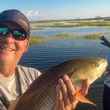
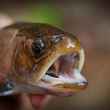




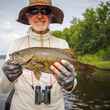


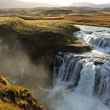

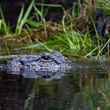

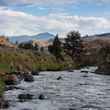


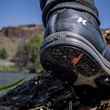
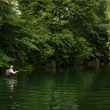




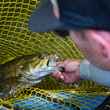
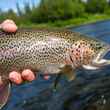
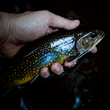

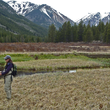
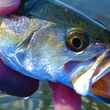
Comments
Tom Herrington replied on Permalink
Very well written and accurately descriptive of the struggle for the environment and the Redfishing.
Thank you!
Pages